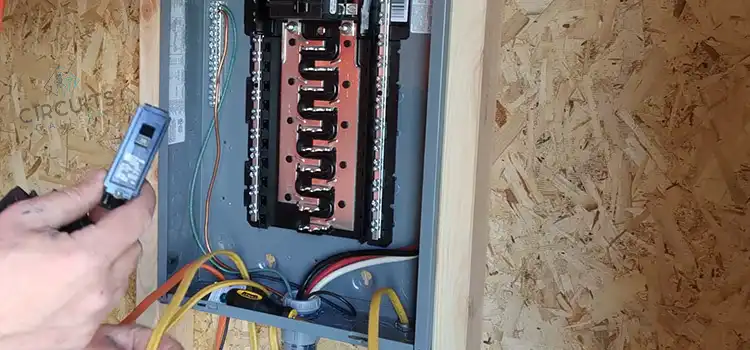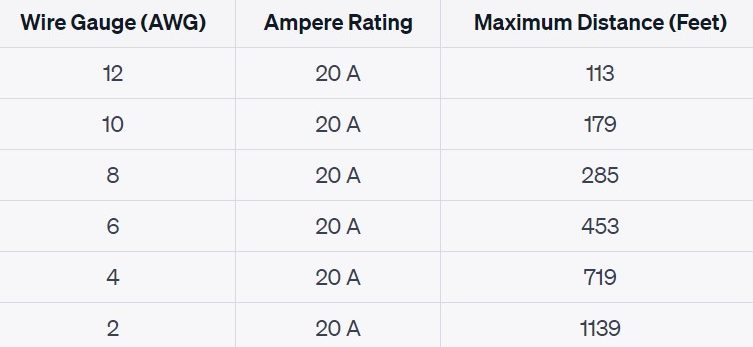How Far Can You Run 12 Gauge Wire on a 20 Amp Circuit? – Ideal Distance to Run
In residential applications, realistic standards frequently recommend a distance of 50–60 feet for running a 12-gauge wire on a 20-amp circuit. These recommendations consider common electrical demands and strike a compromise between installation ease and voltage drop issues.
Due to several variables and considerations, including voltage drop tolerance, average electrical loads, code compliances, and others, the practical requirements for wire distance frequently deviate from the calculated maximum distance.

What Distance Can 12 Gauge Wire Cover on a 20 Amp Circuit?
Limits for voltage loss are outlined in the National Electrical Code (NEC). It advises a 3% for branch circuits and a 5% for feeder circuits maximum voltage drop. The ampacity is adequate for a 20 amp circuit with 12-gauge wire.
Let’s imagine, nevertheless, that you wish to keep the voltage drop to 3% in the worst-case situation. As an example, let’s utilize a 120-volt supply.
Voltage Drop = 3% of 120 volts, is VD= 120*0.03
=3.6 volts
Resistance = Voltage Drop / Amperage
= 3.6 volts / 20 amps
= 0.18 ohms for resistance.
A 12-gauge copper wire has a resistance of roughly 1.588 ohms per 1,000 feet.
Maximum Distance = Resistance per Unit Length / Maximum Resistance Permitted
The maximum distance per 1,000 ft. is –
Maximum Distance = (0.18 / 1.588)*1000
= 113 feet.
However, For running a 12-gauge wire on a 20-amp circuit in residential applications, practical recommendations frequently suggest a distance of 50–60 feet. Mathematically, a 50-feet 12 gauge wire gives,
Resistance = (1.588 ohms / 1,000 feet) * 50 feet
= 0.0794 ohms
Voltage drop = Current * Resistance
Voltage drop = 20 amps * 0.0794 ohms = 1.588 volts, which is almost negligible.

Ultimately, it would be best if you took into account variables like the particular application, voltage drop tolerance, and regional electrical codes which differ the practical situation from the calculative ones.
1. Voltage Drop Tolerance
Keeping the voltage drop to a predetermined level, such as 3%, determines the calculated maximum distance. However, the tolerance for voltage drop may differ between individuals or applications. Others would want to keep the voltage drop as small as possible while others might be more forgiving and accept a slightly higher voltage drop.
2. Standard Electrical Loads
The normal electrical loads in home applications are taken into account in practical guidelines. Compared to industrial or commercial contexts, these loads are often lower in residential settings. In residential applications, a recommended distance of 50–60 feet for a 12-gauge wire on a 20-amp circuit takes into account the typical power consumption and probable voltage loss within an allowable range.
3. Security Margin
To accommodate changes in wire quality, ambient conditions, and potential future loads, practical rules frequently incorporate safety margins. These safety margins offer an extra cushion to guarantee the electrical system operates securely and dependably.
4. Code observance
The requirements and recommendations for wire distances may vary depending on local electrical standards and regulations. To make sure that the appropriate rules and procedures are followed, it is crucial to study the applicable electrical codes in your area.
How Many Outlets Can You Put on a 20 Amp Breaker With 12 Gauge Wire?
Most outlets that can be installed on a particular circuit depend on several variables, including the amp rating of the circuit, the wire gauge used, and local electrical codes.
A maximum of 13 outlets (including receptacles and light fixtures) can normally be put on a single circuit for a 20 amp circuit utilizing 12-gauge wire. The local electrical codes must be consulted, nevertheless, for the precise specifications in your location.
Final Words
Considering a 3% voltage drop, you can run a 12 gauge wire 113 feet for a 20 amp circuit. However, under practical circumstance, different factor such as electrical loads, drop tolerance, code observance, etc affects the parameter. So, the recommended length is 50-60 feet to minimize any negative effects on connected devices’ performance.
Subscribe to our newsletter
& plug into
the world of circuits